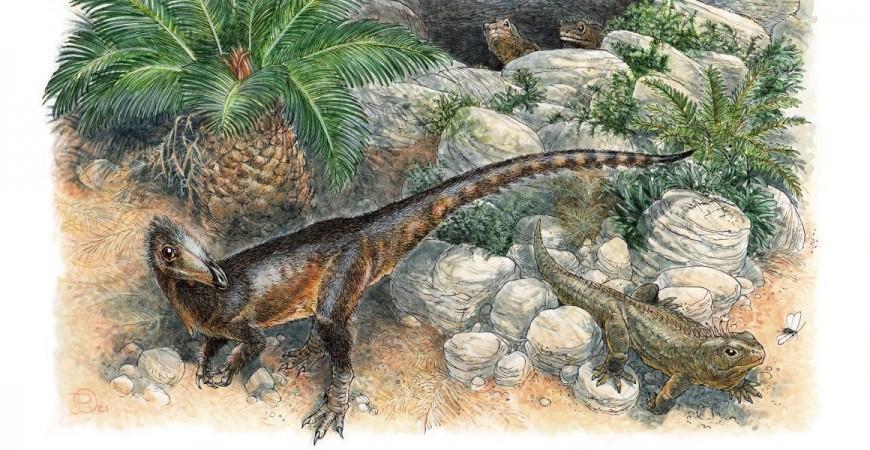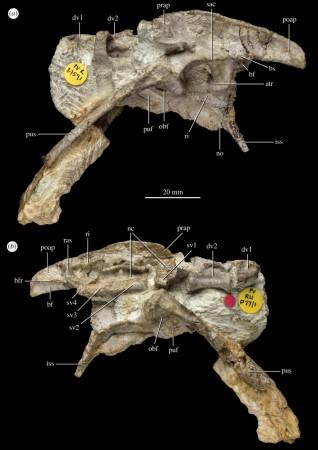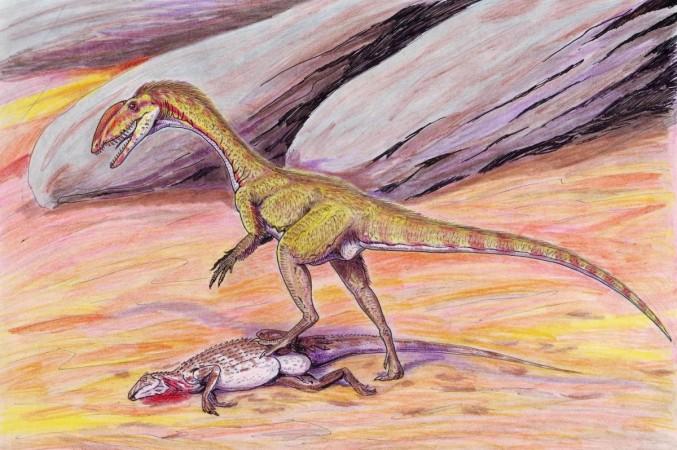Every time a new dinosaur is discovered, it gives us another tiny glimpse into the diversity of these prehistoric reptiles. Not only do they add to the knowledge about their kind, but they also offer new palaeogeographical insights into areas of their discovery. Now, scientists have reported the unearthing of the oldest species of carnivorous dinosaur to be found in the UK.
A multi-institutional study has described a new species of dinosaur known as Pendraig milnera. Named in honor of the late Dr. Angela Milner, an accomplished British paleontologist, the fossilized remains of the newly-identified species were discovered in Wales. According to the authors, the small-sized dinosaur is the oldest meat-eating theropod to be discovered in the UK. The findings were published in the journal Royal Society Open Science.
"Dinosaur discoveries are really rare in Wales, and this is only the third dinosaur species known from the country. It's very exciting to learn more about the dinosaurs that lived here in the UK during the Triassic, right at the dawn of dinosaur evolution," said Dr. Richard Butler, co-author of the study, in a statement. P. milnerae may have lived 215-200 million years ago.
Dragon from Wales

Dr. Milner, who passed away recently, was known for her valuable contributions to the field of paleontology during a career that spanned over 40 years. She was instrumental in the naming of the first spinosaurid to be discovered in the UK—Baryonyx walker. Incidentally, she played an important role in the relocation of the new species a few years ago. Thus, the species, milnerae, was named after her.
Pendarig, in Middle Welsh, means 'Chief Dragon'. This is also a reference to its potential place as an apex predator in the ecosystem that existed in Wales around 215-200 million years ago. In 1952, the fossilized remains were uncovered at a quarry in the small Welsh village of Pantyffynnon in a kind of deposit known as a fissure fill. These are deposits where remains of flora and fauna fell into crevices prior to being covered over and undergoing fossilization.
Long Journey to Discovery
While the species has now joined the ranks of its peers, its road to discovery has been rather mysterious. It has been lost, found, and renamed for four decades. At the time of their recovery, the bones—which included portions of the back, legs, and hips—were assumed to belong to a different group of dinosaurs.

But in reality, it was a new species waiting to be identified. While the numbers of bones were not much to go on, the scientists distinguished that the reptile was probably a coelophysoid. Common during the Late Triassic and Early Jurassic, dinosaurs within the family Coelophysoidea were smaller carnivorous theropods that had long and narrow snouts. Theropods belong to a large clade of dinosaurs known as Theropoda. They were characterized by their three-toed limbs and hollow bones.
However, for the years, the bones were lost within the museum itself. Narrating its rediscovery, Dr.Susannah Maidment, co-author of the study, who trained under Dr. Milner, narrated, "I told her that I couldn't find it, and so she went away and about three hours later she had it."
Recounting Dr. Maidment's efforts, her former student added: "She found it in a drawer of crocodile material, and she must have had the specimen in her mind's eye from when she had previously looked through it. This paper would not have been possible without her."
Confusion Over Identity

An aspect that complicated the certain classification of P. milnerae was its size. It is believed that the remains in hand could have been that of a juvenile. It is possible that adults grew much larger than the specimen that was unburied in Wales. However, this cannot be confirmed due to the process of fossilization.
The presumed habitat of P. milnerae—which is believed to have been an island archipelago—also compounded its identification. Over time, the size of animal species living on islands can become smaller. Decreased availability of resources and lack (or absence) of larger predators lead to this reduction in size. This 'shrinking' process is known as island dwarfism or insular dwarfism.
Distinguishable features that aid in separating one species from another is not always present in fossils of juvenile or infant animals. This added to the uncertainty surrounding the species in question, with researchers initially cataloging it as a species of Syntarsus in the 1990s. Syntarsus was a coelophysid theropod that lived around 190-180 million years ago.

Nevertheless, the given name was discarded. This was because scientists agreed that Syntarsus species were related to other groups, and they were reassigned. Thus, once again, scientists realized the need for further study of the specimen. Dr. Milner's extensive experience guided the analysis of the species.
Small-sized Carnivorous Reptile
Through their examination, the paleontologists concluded that was P. milnerae was a carnivore. However, it was much smaller than those that followed it. "Pendraig milnerae lived near the beginning of the evolution of the meat-eating dinosaurs. It's clear from the bones we have that it was a meat-eater, but early in the evolution of this group these animals were quite small, in contrast to the very famous meat-eating dinosaurs like T. rex which evolved much later," said Dr. Stephan Spiekman, first author of the study.
Addressing the idea of dwarfism of the species, Dr. Spiekman stated the area of discovery possibly being an island during the era likely had a bearing on the new species' size. "Because the fossil reptiles from this area, including Pendraig, are all quite small-sized, we used statistical analyses to investigate whether Pendraig might have been an insular dwarf. The results indicate that Pendraig is indeed small, even for a theropod of that time period, but not uniquely so," he explained.

Additionally, based on the numerous characteristics of the bones, the authors were able to determine that despite the specimens of P. milnerae not being very young, it is likely that they were not fully grown. "So Pendraig might have gotten somewhat bigger than the specimens we have so far, which limits our ability to perform reliable body size analyses," averred Dr. Spiekman.
Now the team intends to investigate the life of P. milnerae further, and also the fauna that it co-existed with, in order to ascertain whether its small size was an outcome of island-dwelling. "With this in mind, we need more evidence from more species to investigate the potential for island dwarfism in this area during that time, but if we could prove it, it would be the earliest known occurrence of this evolutionary phenomenon," concluded Dr. Spiekman.

















